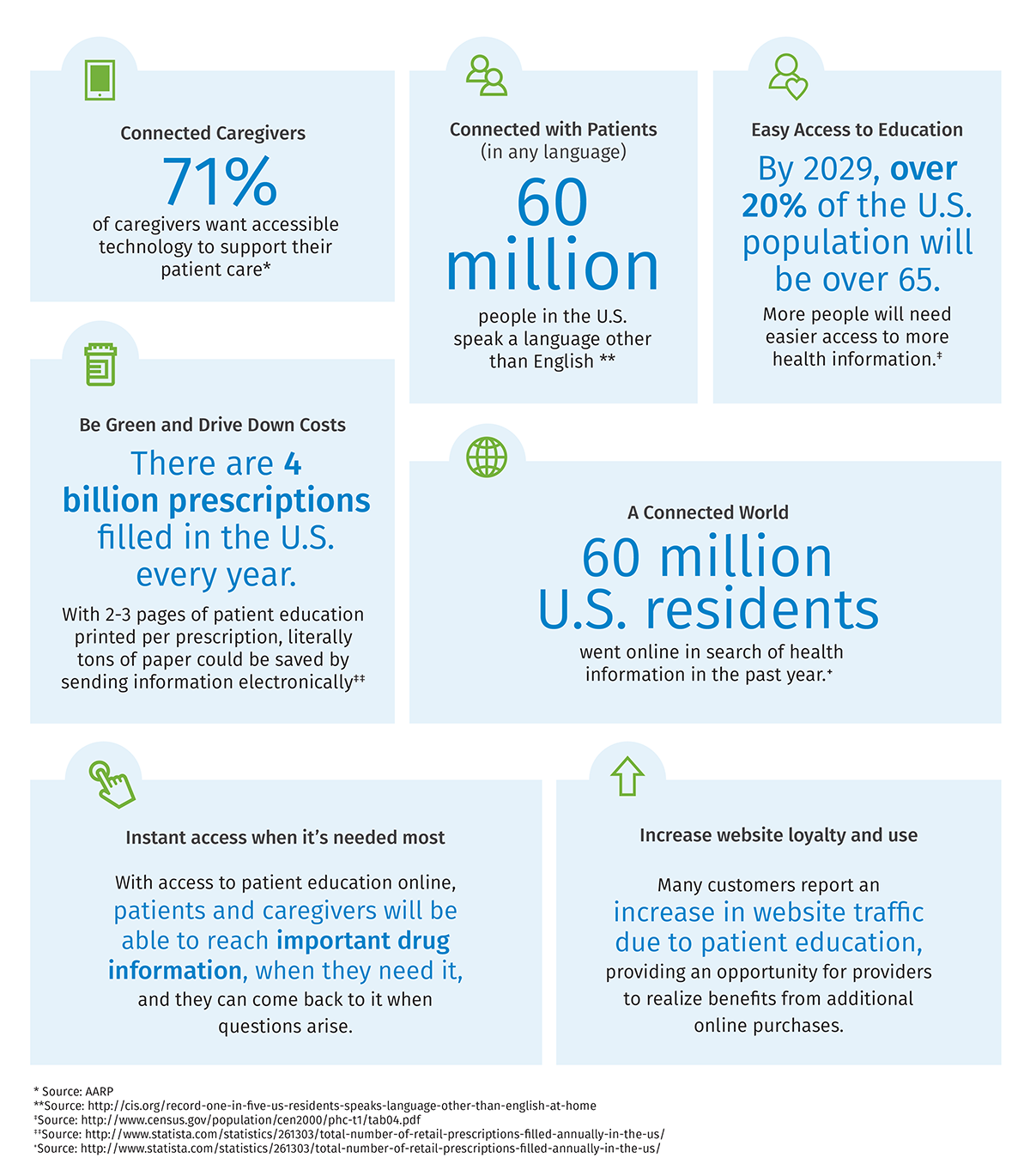Help improve medication adherence through patient knowledge
Patient education is a critical component of effective patient care. Studies show the impact on the quality of patients’ lives when they don’t adhere to recommended treatments.1 Every care team member, from nurses to pharmacists to physicians, bears the responsibility for educating patients on the importance of their medication therapies and the necessity of adherence. And that’s where we come in.
Medi-Span offers a variety of patient education resources your organization can use across the care continuum to help patients adhere to their medications, including prescription drug data and drug interactions database solutions used by thousands of healthcare professionals and consumers worldwide.
More than 50,000 customers across the healthcare continuum efficiently access Medi-Span information through healthcare applications to help support medication decision-making. Our robust patient-facing content is consistent with the healthcare information and clinical decision support your clinicians and professionals use daily in UpToDate® and UpToDate® Lexidrug™ (formerly Lexicomp®).






